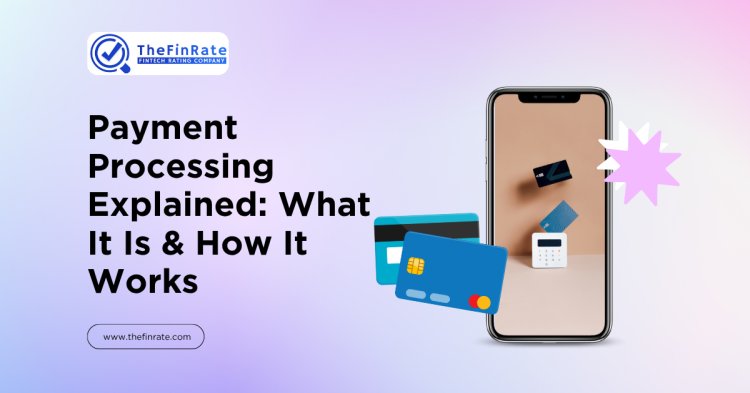Payment Processing Explained: What It Is & How It Works
Learn how payment processing works, from transaction flow to key players. Discover secure, efficient methods to streamline payments in 2025.
Share this Post to earn Money ( Upto ₹100 per 1000 Views )

1. What Is Payment Processing?
Payment processing refers to the system that handles financial transactions between a customer and a merchant. It allows businesses to accept payments via credit/debit cards, mobile wallets, bank transfers, and even cryptocurrency.
It ensures that payments are fast, secure, and seamless, playing a vital role in modern commerce—especially in digital-first environments like eCommerce, SaaS, and fintech.
2. How Does Payment Processing Work?
a) Transaction Initiation
A customer initiates a transaction by entering their payment details on a website, app, or POS terminal.
b) Authorization
The payment gateway encrypts and sends the details to the payment processor, which forwards them to the card network (e.g., Visa, Mastercard).
c) Verification
The issuing bank verifies the customer’s details, checks for fraud, and either approves or declines the transaction.
d) Settlement
If approved, the amount is deducted from the customer’s account and deposited into the merchant’s account within a few days.
✅ This full process usually happens in seconds.
3. Key Players in Payment Processing
-
Merchant: Accepts the payment.
-
Customer: Makes the payment.
-
Payment Gateway: Encrypts and forwards payment data.
-
Payment Processor: Handles communication between all parties.
-
Issuing Bank: The customer’s bank.
-
Acquiring Bank: The merchant’s bank.
-
Card Networks: Visa, Mastercard, etc.
4. Types of Payment Processing Systems
a) Card-Based Processing
The most common method. Uses Visa, Mastercard, Amex, etc.
b) ACH Transfers
Bank-to-bank payments, ideal for subscriptions and B2B.
c) Mobile Payments
UPI, Google Pay, Apple Pay—growing fast in mobile-first regions.
d) Crypto Payments
Bitcoin, Ethereum, and stablecoins—rising in niche markets.















